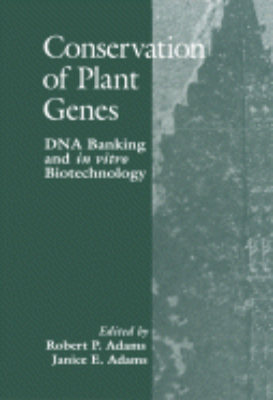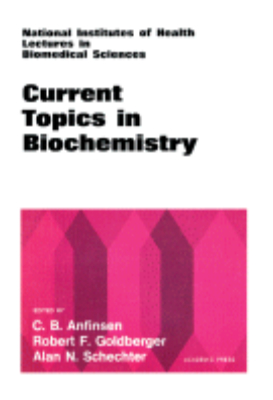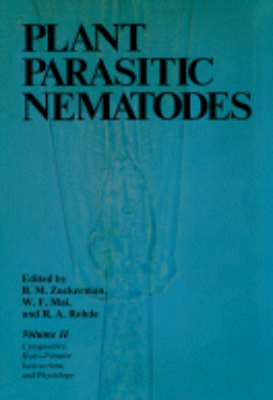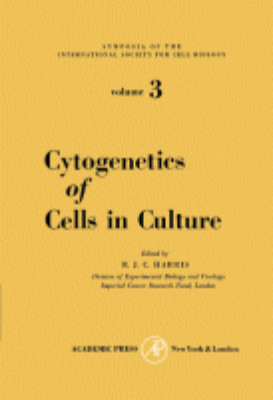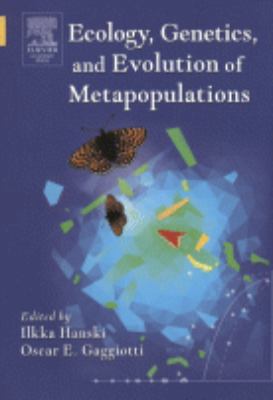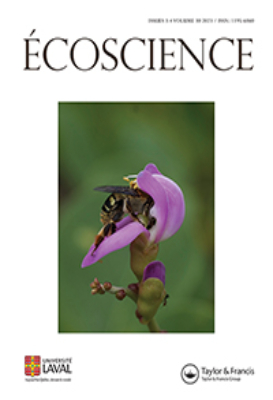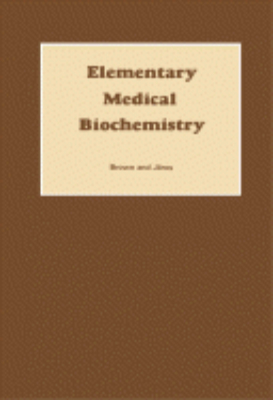Life Science
Control and Manipulation of Animal Growth
Control and Manipulation of Animal Growth explores the development and growth of animals. The reproductive system of animals is also discussed, along with how its development can be accelerated. The topic is presented using various studies by the authors together with a number of references to other books and studies. This book contains 20 chapters and revolves around the advancement of an animal's growth hormone. It explains how gender plays a part in an animal's development and talks about factors that can affect the process, such as environment, temperature, and food intake. This book also discusses bone growth, fetal growth, metabolism, factors of epidermal growth, growth manipulation, growth hormones, hormonal manipulation, and the effect of insulin. This text covers a wide range of facts and investigations and can therefore serve as an excellent reference for people who want to study an animal's internal and external development.
Control of Animal Cell Proliferation: Volume I 1985
Control of Animal Cell Proliferation, Volume I presents how animals regulate their proliferation activity and how cells become proliferatively autonomous resulting in malignant behavior. This book provides an understanding of mechanisms that control animal cell proliferation. Organized into five parts encompassing 17 chapters, this volume begins with an overview of the efforts to elucidate he genetic alterations that lead normal cells to become cancer cells, which have been aided considerably by the investigation of acute retroviruses. This text then examines the factors involved in growth control. Other chapters describe in detail the biology and biochemistry of epidermal growth factor (EGF), which have been elucidated through the study of cultured human fibroblasts. This book discusses as well the protein kinases with specificity for tyrosine. The final chapter deals with regulation of initiation of eukaryotic protein synthesis by phosphorylation. This book is a valuable resource for scientists as well as cellular and molecular biologists.
Control of Animal Cell Proliferation: Volume II 1987
Control of Animal Cell Proliferation, Volume II discusses how animal cells become proliferatively autonomous, which results in malignant behavior. This book begins with trends and issues on membrane structure and teratocarcinoma research. The structure and function of several growth factors and their receptors such as thrombin, transferrin, glucocorticoid, and B and T cell factors are also discussed. This text likewise covers the mechanism of information transduction that includes intracellular pH and calcium. The aspects of genome organization and gene transcription are deliberated in the last chapters. This publication provides biologists and students with a coherent picture of cell proliferation.
Current Topics in Biochemistry
National Institutes of Health Lectures in Biomedical Sciences: Current Topics in Biochemistry is based on a series of lectures dealing with current topics in biochemistry and more biologically or medically oriented topics. These lectures were organized for the benefit of young physicians who had just finished their clinical training but were several years out-of-date with respect to basic scientific research. The lecturers were asked, therefore, to present not only their own contributions to the field but also a broad review of recent developments in a large area of science. The lectures were surprisingly well attended not only by the associates for whom they had originally been designed but also by a large fraction of the NIH research community, specialists and nonspecialists alike. The lectures in this volume cover the following topics: genetic control of lipid metabolism; mammalian RNA-containing tumor viruses; current directions in research on cyclic AMP; the chemistry and biology of collagen; properties of the protein complex of striated muscle involved in the contractile process; cell surface receptor sites; and membrane structure and function.
Current Topics in Biochemistry 1973
Current Topics in Biochemistry 1973 is based on a series of lectures held at the National Institutes of Health dealing with biochemistry. This group of lectures is the most recent in a program, which was established in the mid-1960s, to review various research fields for the scientific community at the Institutes. The topics for these series were chosen to emphasize active fields of general interest for a diverse audience of scientists. The speakers were therefore encouraged to present an overview of their fields rather than a detailed discussion of current research problems. The lectures in present collection cover the following topics: the problem of predicting the conformation of a protein from a knowledge of its amino acid sequence; studies on the structure of glutamic dehydrogenase; immunologic approaches to the study of proteins; the NIH shift and its implications for the mechanism of biological oxidations; separation of transcribable and repressed chromatin; gene expression in animal cells; and plasma lipoproteins and apolipoproteins.
Cytogenetics Host-Parasite Interactions and Physiology
Plant Parasitic Nematodes, Volume II: Cytogenetics, Host-Parasite Interactions, and Physiology is a masterful reference work in nematology that includes information in ultrastructure, enzymology, and chemistry of body composition; culturing; virus transmission; biological races; and nature of plant resistance. This volume provides information about plant parasitic nematode genetics and cytology. It first explains the history and the advances in nematology, and then discusses the more specific topics about the biological processes involving nematodes. The discussions on host-parasite interactions, biochemistry, and physiology follow these topics. This book also presents useful information regarding free-living and animal parasitic nematodes. This treatise is written to provide an up-to-date reference source for students, lecturers, and research professionals in plant parasitology, specifically nematology, and related fields.
Cytogenetics of Aneuploids
Cytogenetics of Aneuploids deals with the cytogenetic aspects of aneuploidy in plants, emphasizing the trisomics, monosomics, and nullisomics and cytogenetics of substitution lines as well as alien additions and substitutions. An account of aneuploidy in animals and man is also given. This volume is organized into 12 chapters and begins with an overview of terminology and chromosomal formulas, along with a brief history of the cytogenetics of aneuploids as a field of enquiry. The next chapters review the entire literature on trisomics, their sources, cytology, transmission rates, genetics, morphology, anatomy, physiology, and biochemistry. The discussion then shifts to monosomics and nullisomics, including their sources and cytology as well as breeding behavior, morphology, and genetic studies. Other uses of monosomics and nullisomics are considered. The following chapters deal with intervarietal substitutions and alien additions and substitutions, emphasizing different methods of producing substitution lines and their utility in genetic analysis and practical plant breeding programs. The book concludes by describing special features of aneuploidy in animals and highlighting specific cases of aneuploidy in the animal kingdom. This book will be of interest to plant breeders and geneticists.
Cytogenetics of Cells in Culture: 1964
Cytogenetics of Cells in Culture is a compendium of papers that deals with techniques to detect patterns of DNA replication, cellular control mechanisms, and chromosome analyses with automated instrumentation. Some papers discuss the effects of cell hybridization and of noxious substances such as radiation, chemical agents, and viruses on chromosomal patterns. Other papers focus on the influence of altered chromosomal complement on the survival of cells to long-term tissue culture or to ionizing radiation treatment. A couple of papers points out that naturally occurring chromosomal abnormalities in mammalian populations are relatively rare and are not necessarily associated with physical defects or disease. One paper notes that chromosomes in cells with different functions have different patterns of replication in which the changes are small and hidden. The chromosomes will usually be neutralized showing little of the characteristic pattern of replication or condensation during the early cleavage stages, that will later change into differentiated characteristic ways for each tissue type. Another paper describes chromosome breakage associated with viruses and DNA inhibitors. The compendium can prove beneficial for biochemists, micro-biologists, cellular researchers, and academicians involved in the study of cellular biology or physiology.
Cytogenetics of Cells in Culture: Volume 3 1964
Cytogenetics of Cells in Culture is a compendium of papers that deals with techniques to detect patterns of DNA replication, cellular control mechanisms, and chromosome analyses with automated instrumentation. Some papers discuss the effects of cell hybridization and of noxious substances such as radiation, chemical agents, and viruses on chromosomal patterns. Other papers focus on the influence of altered chromosomal complement on the survival of cells to long-term tissue culture or to ionizing radiation treatment. A couple of papers points out that naturally occurring chromosomal abnormalities in mammalian populations are relatively rare and are not necessarily associated with physical defects or disease. One paper notes that chromosomes in cells with different functions have different patterns of replication in which the changes are small and hidden. The chromosomes will usually be neutralized showing little of the characteristic pattern of replication or condensation during the early cleavage stages, that will later change into differentiated characteristic ways for each tissue type. Another paper describes chromosome breakage associated with viruses and DNA inhibitors. The compendium can prove beneficial for biochemists, micro-biologists, cellular researchers, and academicians involved in the study of cellular biology or physiology.
Data Analysis in Biochemistry and Biophysics
Data Analysis in Biochemistry and Biophysics describes the techniques how to derive the most amount of quantitative and statistical information from data gathered in enzyme kinetics, protein-ligand equilibria, optical rotatory dispersion, chemical relaxation methods. This book focuses on the determination and analysis of parameters in different models that are used in biochemistry, biophysics, and molecular biology. The Michaelis-Menten equation can explain the process to obtain the maximum amount of information by determining the parameters of the model. This text also explains the fundamentals present in hypothesis testing, and the equation that represents the statistical aspects of a linear model occurring frequently in this field of testing. This book also analyzes the ultraviolet spectra of nucleic acids, particularly, to establish the composition of melting regions of nucleic acids. The investigator can use the matrix rank analysis to determine the spectra to substantiate systems whose functions are not known. This text also explains flow techniques and relaxation methods associated with rapid reactions to determine transient kinetic parameters. This book is suitable for molecular biologists, biophysicists, physiologists, biochemists, bio- mathematicians, statisticians, computer programmers, and investigators involved in related sciences
Dento/Oro/Craniofacial Anomalies and Genetics
Dental defects may be the physical expression of genetic defects, and so they can often be seen in a variety of syndromes associated with malformations of organs. However, dental defects are often not recognized, identified, nor characterised despite representing a possible diagnostic sign for an undiagnosed condition. This book addresses this gap by providing an understanding of dental genetics and its developmental biology counterpart. With approximately seventy well-illustrated examples, the authors present the clinical oro-facial manifestations accompanying various syndromes, providing the necessary knowledge for diagnostic purposes, as well as giving insight into recent development for each specific condition. The clarity and format of this book make it an ideal support guide both in the clinic and while conducting research.
Deterministic Versus Stochastic Modelling in Biochemistry and Systems Biology
"Stochastic kinetic methods are currently considered to be the most realistic and elegant means of representing and simulating the dynamics of biochemical and biological networks. Deterministic versus stochastic modelling in biochemistry and systems biology introduces and critically reviews the deterministic and stochastic foundations of biochemical kinetics, covering applied stochastic process theory for application in the field of modelling and simulation of biological processes at the molecular scale. Following an overview of deterministic chemical kinetics and the stochastic approach to biochemical kinetics, the book goes onto discuss the specifics of stochastic simulation algorithms, modelling in systems biology and the structure of biochemical models. Later chapters cover reaction-diffusion systems, and provide an analysis of the Kinfer and BlenX software systems. The final chapter looks at simulation of ecodynamics and food web dynamics. Key Features. Introduces mathematical concepts and formalisms of deterministic and stochastic modelling through clear and simple examples. Presents recently developed discrete stochastic formalisms for modelling biological systems and processes. Describes and applies stochastic simulation algorithms to implement a stochastic formulation of biochemical and biological kinetics"
Drug Discovery in Cancer Epigenetics
Drug Discovery in Cancer Epigenetics is a practical resource for scientists involved in the discovery, testing, and development of epigenetic cancer drugs. Epigenetic modifications can have significant implications for translational science as biomarkers for diagnosis, prognosis or therapy prediction. Most importantly, epigenetic modifications are reversible and epigenetic players are found mutated in different cancers; therefore, they provide attractive therapeutic targets. There has been great interest in developing and testing epigenetic drugs, which inhibit DNA methyltransferases, histone modifying enzymes or chromatin reader proteins. The first few drugs are already FDA approved and have made their way into clinical settings. This book provides a comprehensive summary of the epigenetic drugs currently available and aims to increase awareness in this area to foster more rapid translation of epigenetic drugs into the clinic.
Ecology, Genetics and Evolution of Metapopulations
Ecology, Genetics and Evolution of Metapopulations is acollection of specially commissioned articles that looks at fragmented habitats, bringing together recent theoretical advances and empirical studies applying the metapopulation approach. Several chapters closely integrate ecology with genetics and evolutionary biology, and others illustrate how metapopulation concepts and models can be applied to answer questions about conservation, epidemiology, and speciation. The extensive coverage of theory from highly regarded scientists and the many substantive applications in this one-of-a-kind work make it invaluable to graduate students and researchers in a wide range of disciplines.
Electron Microscopy of Plant Cells
Electron Microscopy of Plant Cells serves as manual or reference of major modern techniques used to prepare plant material for transmission and scanning electron microscopy. There have been other books that generally discuss electron microscope methodology. This book focuses on problem areas encountered through the presence of tough cell walls and large central vacuole. It details preparative techniques for botanical specimens. Each of the nine chapters of this book covers the basic principles, useful applications, and reliable procedures used on the method of electron microscopy. Other topics discussed in each chapter include the general preparation and straining of thin sections, quantitative morphological analysis, and enzyme cytochemistry. This book also explains the immunogold labelling, rapid-freezing methods, and ambient- and low-temperature scanning electron microscopy among others. This book will be invaluable to general scientists, biologists, botanists, and students specializing in plant anatomy.
Elementary Medical Biochemistry
Elementary Medical Biochemistry deals with the biochemical basis of the process of life, particularly, the principles of metabolic processes and the systems controlling these processes. The book reviews matter, energy, and the molecular transport processes in the body (known as diffusion, osmosis, filtration, active transport, circulation). The text also describes the medical uses of oxygen, and its functions together with hydrogen, carbon, and nitrogen. The book explains the importance of minerals in the body such as sodium, potassium, calcium, magnesium, iron, chlorine, phosphorus, sulfur, the trace elements (copper, manganese, cobalt), and other elements (nickel, cadmium, vanadium). Chemical reactions either form or break chemical bonds resulting in an uptake or release of energy. The book explains the various factors affecting the rate at which a chemical reaction occurs. These factors include temperature, concentration of reagents, or enzymes. The text also describes the metabolic fate of pyruvic acid, the glycolysis in muscle tissue, and the handling of end-products of metabolism by the body. The book is intended for students of nursing with diploma courses in general obstetrics and psychiatric nursing.
Elsevier’s Integrated Biochemistry
"Each title in the new Integrated series focuses on the core knowledge in a specific basic science discipline, while linking that information to related concepts from other disciplines. Case-based questions at the end of each chapter enable you to gauge your mastery of the material, and a color-coded format allows you to quickly find the specific guidance you need. Bonus STUDENT CONSULT access included with the text allows you to conveniently access the books content online clip content to your handheld device link to content in other STUDENT CONSULT titles and more! These concise and user-friendly references provide crucial guidance for the early years of medical training, as well as for exam preparation. Key Features. Includes case-based questions at the end of each chapter. Features a colour-coded format to facilitate quick reference and promote effective retention. Offers access to STUDENT CONSULT! At www.studentconsult.com, you'll find the complete text and illustrations of the book online, fully searchable ""Integration Links"" to bonus content in other STUDENT CONSULT titles content clipping for handheld devices an interactive community center with a wealth of additional resources and much more!"
Emery and Rimoin’s Principles and Practice of Medical Genetics
For decades, Emery and Rimoins Principles and Practice of Medical Genetics has provided the ultimate source for practicing clinicians to learn how the study of genetics can be integrated into practice. With almost 5,000 pages of detailed coverage, this fully online sixth edition of the classic reference adds the latest information on prenatal diagnosis, genetic screening, genetic counseling, and treatment strategies to complete its coverage of the growing field for medical students, residents and physicians involved in the care of patients with genetic conditions. Clinically oriented information is supported by expanded sections on basic principles of genetics, research approaches, and analytics to embrace the evolving population of students, researchers, and practitioners who are integrating their work to provide advanced diagnosis, prevention and treatment of human disease. With advances in high-throughput technologies propelling the closer integration of lab and clinical work, this edition bridges the gap between high-level molecular genetics and clinical application.


